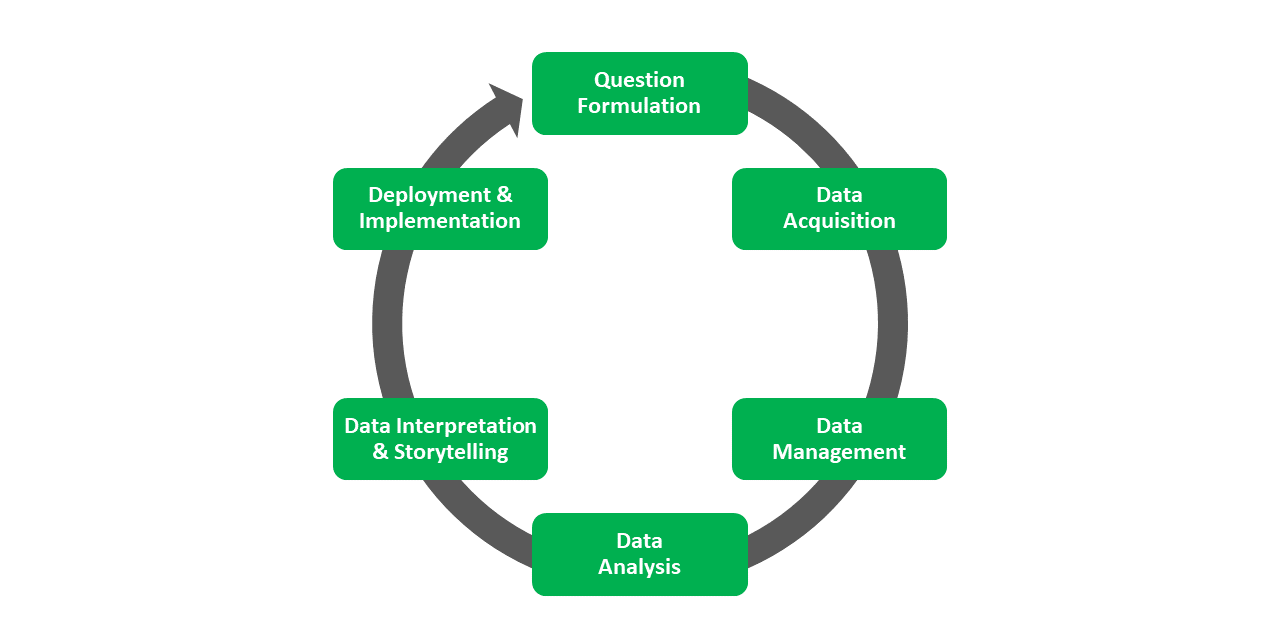Chapter 1 Overview of HR Analytics Project Life Cycle
Link to conceptual video: https://youtu.be/Ht18NwAKKcM
The Human Resource Analytics Project Life Cycle (HRAPLC) offers a framework for conceptualizing the prototypical phases of a generic project life cycle. When learning how to apply HR analytics, I’ve found that it’s helpful to envision where and how contributions can be made at the project level and which specific knowledge, skills, abilities, and other characteristics (KSAOs) are required at each phase of a project. The HRAPLC phases are as follows.
- Question Formulation: process of identifying and posing strategy-inspired and -aligned problems and/or questions that can be solved or answered using data.
- Data Acquisition: process of collecting, retrieving, gathering, and sourcing data that can be used to solve problems and answer questions.
- Data Management: process of wrangling, cleaning, manipulating, and structuring data.
- Data Analysis: process of applying mathematical, statistical, and/or computational analyses to data to identify associations, differences, changes, or classes, as well as to predict the likelihood of future events, values, differences, or changes.
- Data Interpretation and Storytelling: process of making sense of data-analysis findings in the context of the focal problem and/or question, and of disseminating and communicating the findings to different stakeholders.
- Deployment and Implementation: process of prescribing or taking action based on interpretation of data-analysis findings.

Notably, the phases of the HRAPLC generally align with the steps of the classic scientific process, which include formulating a hypothesis, designing a study, collecting data, analyzing data, and reporting findings. This similarity underscores how HR analytics is consistent with a scientific approach to HR management. and, more generally, to an empirical approach aimed at uncovering truth based on data. Like the scientific process, the HRAPLC is predicated on empiricism, which means truth comes from data. That is, the engine of the HRAPLC runs on data, and these data serve as evidence on which we build knowledge and glean insights.

In the following six chapters, I provide a detailed conceptual overview of each HRAPLC phase, beginning with Question Formulation.